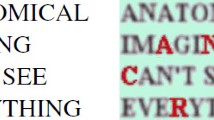Abstract
Objective
To evaluate the accuracy of diagnosing N3 disease using positron emission tomography (PET) with 2-[fluorine-18]fluoro-2-deoxy-D-glucose (FDG) in patients with pulmonary disease.
Subjects and Methods
Twenty patients diagnosed as FDG-PET N3 were enrolled. On FDG-PET, lymph nodes were considered to be positive when increased uptake as compared with that of the surrounding mediastinum was visually observed, or the mean standardized uptake ratio (SUR) was more than 2, 2.5, or 3. On CT, lymph nodes exceeding 1 cm in the shortest diameter were regarded as positive.
Results
The PET result was true positive (TP) in 2 patients and false positive (FP) in 18 with an overall accuracy (OA) of 10% using visual criteria. Using an SUR of more than 2.5, the result was TP in 2, FP in 3, and true negative (TN) in 15, the false negative (FN) in 0, with an OA of 85%. CT diagnosis was TP in 2, FP in 9, and TN in 9 with an OA of 55%. The accuracy using the SUR criteria of more than 2.5 was superior to that of CT.
Conclusion
Of 20 patients with the diagnosis of PET N3, we found frequent over-diagnosis in nodal staging using the visual criteria.
Similar content being viewed by others
References
Wahl RL, Quint LE, Greenough RL, Meyer CR, White RJ, Orringer MB. Staging of mediastinal non-small cell lung cancer with FDG PET, CT, and fusion image: preliminary prospective evaluation.Radiology 1994; 191:371–377.
Patz EF Jr, Lowe VJ, Goodman PC, Herndon J. Thoracic nodal staging with positron emission tomography (PET) and18FDG in patients with bronchogenic carcinoma.Chest 1995; 108:1617–1621.
Scott WJ, Gobar LS, Terry JD, Dewen NA, Sunderland JJ, Little AG. Mediastinal lymph node staging of non-small-cell lung cancer: A prospective comparison of computed tomography and positron emission tomography.J Thorac Cardiovasc Surg 1996; 111:642–648.
Steinert HC, Hauser M, Allemann F, Engel H, Berthold T, von Schulthess GK, et al. Non-small cell lung cancer: Nodal Staging with FDG PET versus CT with correlative lymph node mapping and sampling.Radiology 1997; 202:441–446.
Guhlmann A, Strorck M, Kotzerke J, Moog F, Sunder-Plassmann L, Reske SN. Lymph node staging in non-small-cell lung cancer: evaluation by [18F]FDG positron emission tomography (PET).Thorax 1997; 52:438–441.
Boiselle PM, Patz EF Jr, Vining DJ, Weissleder R, Shephard JA, McLoud TC. Imaging of mediastinal lymph nodes: CT, MR, and FDG PET.Radiographics 1998; 18:1061–1069.
Marom EM, McAdams HP, Erasmus JJ, Goodman PC, Culhane DK, Coleman RE. Staging non-small cell lung cancer with whole-body PET.Radiology 1999; 212:803–809.
Ahuja V, Coleman RE, Hemdon J, Patz EF Jr. The prognostic significance of fluorodeoxyglucose positron emission tomography imaging for patients with non-small cell lung carcinoma.Cancer 1998; 83:918–924.
Shreve PD, Anzai Y, Wahl RL. Pitfalls in oncologic diagnosis with FDG PET imaging: Physiologic and benign variants.Radiographics 1999; 19:61–77.
Bakheet SM, Sleem M, Powe J, Al Amro A, Larsson SG, Mahassin Z. F-18 fluorodeoxyglucose chest uptake in lung inflammation and infection.Clin Nucl Med 2000; 25:273–278.
Inoue K, Matoba S. Counterattack of re-emerging tuberculosis after 38 years.Int J Tuberc Lung Dis 2001 ; 5:873–875.
Fujimoto K, Edamitsu O, Meno S, Abe T, Honda N, Ogoh Y, et al. MR diagnosis for metastasis or non-metastasis of mediastinal and hilar lymph nodes in case of primary lung cancer: Detectability, signal intensity, and MR-pathologic correlation.Nippon Igaku Hoshasen Gakkai Zasshi 1995; 55:162–171.
Vansteenkiste JF, Stroobants SG, De Leyn PR, Dupont PJ, Bogaert J, Maes A, et al. Lymph node staging in non-small-cell lung cancer with FDG-PET scan: A prospective study on 690 lymph node stations from 68 patients.J Clin Oncol 1998; 16:2142–2419.
Liewald F, Grosse S, Storck M, Guhlmann A, Halter G, Reske S, et al. How useful is positron emission tomography for lymphnode staging in non-small-cell lung cancer?Thorac Cardiovasc Surg 2000; 48:93–96.
Yoon YC, Lee KS, Shim YM, Kim B-T, Kim K, Kim TS. Metastasis to regional lymph nodes in patients with esoph-ageal squamous cell carcinoma: CT versus FDG PET for presurgical detection—prospective study.Radiology 2003; 227:764–770.
Fujii H, Yasuda S, Ide M, Takahashi W, Mochizuki Y, Shohtsu A, et al. Hilar activity on the F-18 FDG whole-body PET studies.Jpn J Clin Radiol 1999; 44:199–206.
Shiraki N, Hara M, Ogino H, Shibamoto Y, Iida A, Tamaki T, et al. False-positive and true-negative hilar and mediastinal lymph nodes on FDG-PET—Radiological-pathological correlation—.Ann Nucl Med 2004; 18:23–28.
Lowe VJ, Duhaylongsod FG, Patz EF Jr, Delong DM, Hoffman JM, Wolfe WG, et al. Pulmonary abnormalities and PET data analysis: A retrospective study.Radiology 1997; 202:435–439.
Farrell MA, McAdams HP, Herndorn JE, Patz EF Jr. Non-small cell lung cancer: FDG PET for nodal staging in patients with stage I disease.Radiology 2000; 215:886–890.
Kubota R, Yamada S, Kubota K, Ishiwata K, Tamahashi N, Ido T. Intratumoral distribution of fluorine-18-fluoro-deoxyglucosein vivo: High accumulation in macrophages and granulation tissues studied by microautoradiography.J Nucl Med 1992; 33:1972–1980.
Author information
Authors and Affiliations
Rights and permissions
About this article
Cite this article
Hara, M., Shiraki, N., Itoh, M. et al. A problem in diagnosing N3 disease using FDG-PET in patients with lung cancer —High false positive rate with visual assessment—. Ann Nucl Med 18, 483–488 (2004). https://doi.org/10.1007/BF02984564
Received:
Accepted:
Issue Date:
DOI: https://doi.org/10.1007/BF02984564




